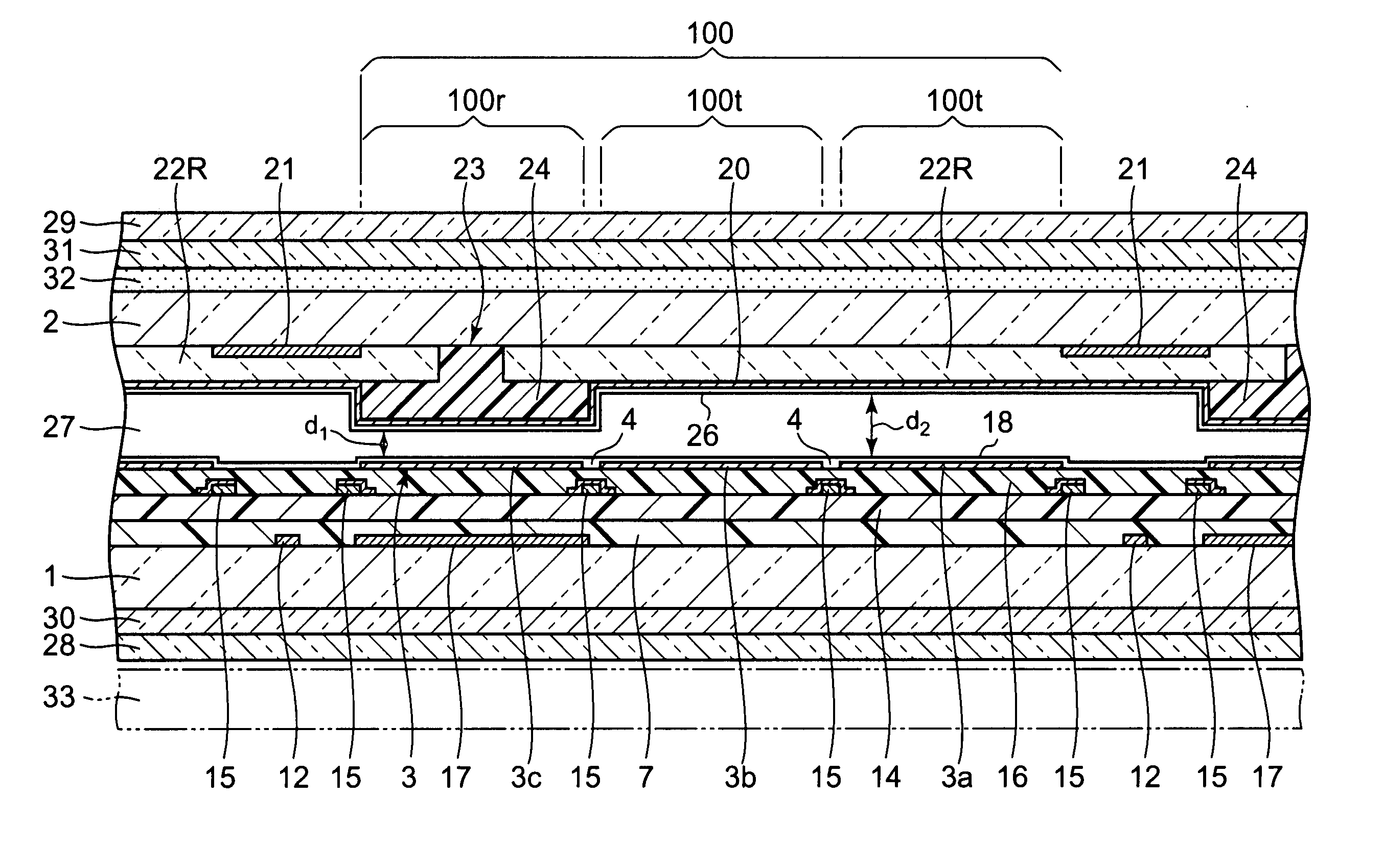Homeotropic alignment type semi-transmissive reflective liquid crystal display device
a liquid crystal display device and homeotropic alignment technology, applied in non-linear optics, instruments, optics, etc., can solve the problems of uneven display, inability to perform reflective display, and inability to align liquid crystal molecules in response to voltage applied
- Summary
- Abstract
- Description
- Claims
- Application Information
AI Technical Summary
Benefits of technology
Problems solved by technology
Method used
Image
Examples
first embodiment
[0058] FIGS. 1 to 5 show the first embodiment of the resent invention, where FIG. 1 is a plan view of a part of a liquid crystal display device, FIGS. 2, 3, and 4 are cross sectional views as taken along a II-II line, a III-III line, and a IV-IV line of FIG. 1 respectively, and FIG. 5 is an expanded cross sectional view showing a part of FIG. 2 in expansion.
[0059] The present liquid crystal display device is a homeotropic alignment type active matrix liquid crystal display device, and comprises a pair of transparent substrates 1 and 2 arranged to face each other with a predetermined gap therebetween, and a liquid crystal layer 27 having negative dielectric anisotropy sealed in the gap between the pair of substrates 1 and 2, as show in FIGS. 1 to 5. Of the facing internal surfaces of the pair of substrates 1 and 2, the internal surface of one substrate, for example, the internal surface of the substrate (hereinafter referred to as rear substrate) 1 at the opposite side to the observ...
second embodiment
[0109] FIGS. 6 to 8 show the second embodiment of the present invention, where FIG. 6 is a plan view showing a part of a liquid crystal display device, FIG. 7 is a cross sectional view of the liquid crystal display device as taken along a VII-VII line of FIG. 6, and FIG. 8 is an expanded cross sectional view showing a part of FIG. 7 in expansion. In the present embodiment, the components corresponding to the above-described first embodiment will be denoted by the same reference numerals, and explanation for these components will be omitted.
[0110] The liquid crystal display device according to the present embodiment has a plurality of projections 25 provided on the internal surface of the front substrate 2 on which the opposing electrode 20 is formed, such that the projections 25 respectively correspond to the center of at least one electrode portion among the electrode portions 3a, 3b, and 3c separated by the slits 4 provided for each of the plurality of pixel electrodes 3 on the r...
PUM
 Login to View More
Login to View More Abstract
Description
Claims
Application Information
 Login to View More
Login to View More - R&D
- Intellectual Property
- Life Sciences
- Materials
- Tech Scout
- Unparalleled Data Quality
- Higher Quality Content
- 60% Fewer Hallucinations
Browse by: Latest US Patents, China's latest patents, Technical Efficacy Thesaurus, Application Domain, Technology Topic, Popular Technical Reports.
© 2025 PatSnap. All rights reserved.Legal|Privacy policy|Modern Slavery Act Transparency Statement|Sitemap|About US| Contact US: help@patsnap.com



